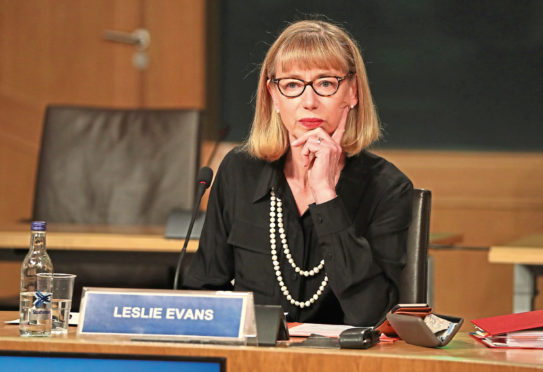
Through the lens of the Scottish Government Handling of Harassment Complaints Committee, the public is being offered a rare glimpse into the inner workings of the highest echelons of government, and the view it’s getting is of a chaotic kaleidoscope of incompetence or worse.
Civil servants, key to the botched complaints process against Alex Salmond, have, so far, refused to answer questions, joked about “looking for another job”, forgotten or deleted vital texts, declined to give evidence in person, and repeatedly had to correct evidence because they had forgotten things, misremembered things or been wrong about things.
These highly paid, gilt-edged pensioned public servants have by now provided the committee and the public with such a whiff of evasion, obfuscation and arrogance, that cumulatively, where once there may have been some confidence about motive and reason, there is now clear doubt.
The political ramifications for the first minister of the inquiry, set up to explore the “unlawful” handling of harassment complaints made against Alex Salmond by her government, are already being duly rehearsed but last week, the focus was on the competency of the public servants that surround her.
At the last count, four senior civil servants have had to write to the committee to either correct evidence or clarify what was concluded from their words.
Meanwhile, former HR director at the Scottish Government, Barbara Allison, who previously flatly denied to MSPs she had been sent a text message while on holiday in the Maldives from her boss, the permanent secretary, Leslie Evans, on the day that the government conceded the judicial review to Salmond, had to admit that was untrue. Indeed, having retrieved her own text messages, her memory has remained murky but her credibility even more so.
Evans had texted Allison and said: “Thanks Barbara – battle maybe [sic] lost but not the war. Hope you are having lovely & well-deserved break. L.”
Allison replied: “Thanks Leslie. It is lovely here. My mind and thoughts are with you all there tho. Best wishes. Bx”
Setting aside the question of what was the “battle” and what was the “war”, and whether it is credible to believe that a senior civil servant, inextricably linked with the Scottish Government’s legal battle with Salmond, would forget that she and her boss had engaged in such bants, there remains a question mark about the messages she says she must have deleted that were part of the same conversation, and what they may or may not reveal.
The inquiry continues and despite previous claims that there was nothing to hide, this is starting to look more and more like a government involved in a cover-up.
Salmond’s supporters have always believed in a conspiracy, only given succour by those text exchanges and references to war. My questions would be less about the semantics of what was meant by the “battle” or the “war” and more about why the permanent secretary was busy composing text messages on a day that it might have been more appropriate to be penning her P45.

Enjoy the convenience of having The Sunday Post delivered as a digital ePaper straight to your smartphone, tablet or computer.
Subscribe for only £5.49 a month and enjoy all the benefits of the printed paper as a digital replica.
Subscribe